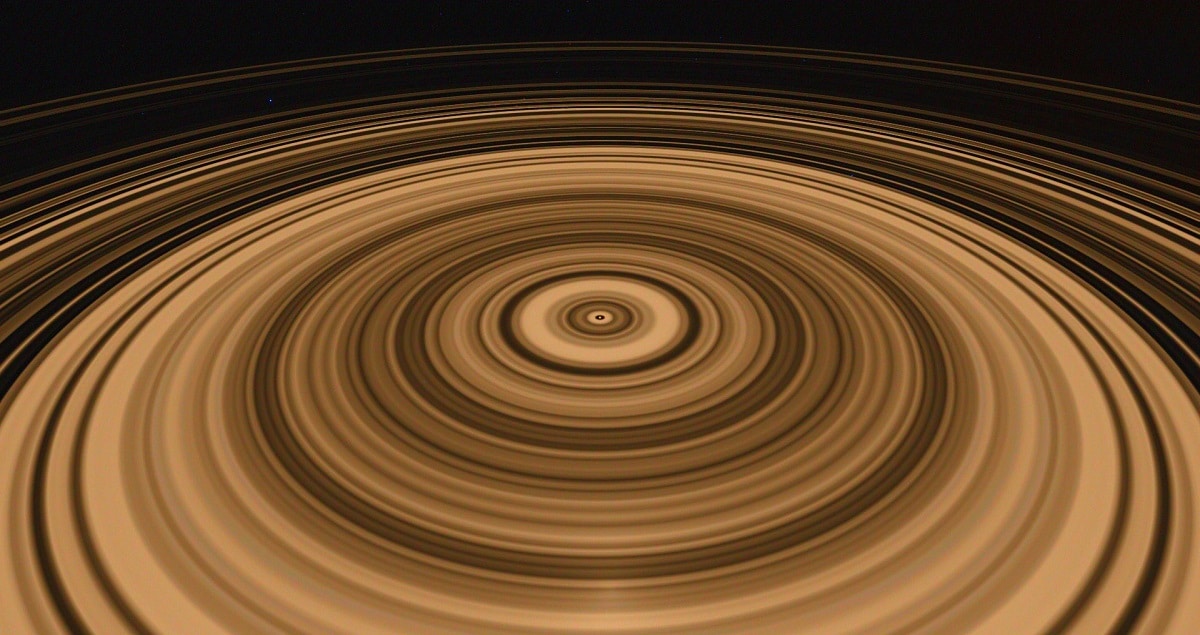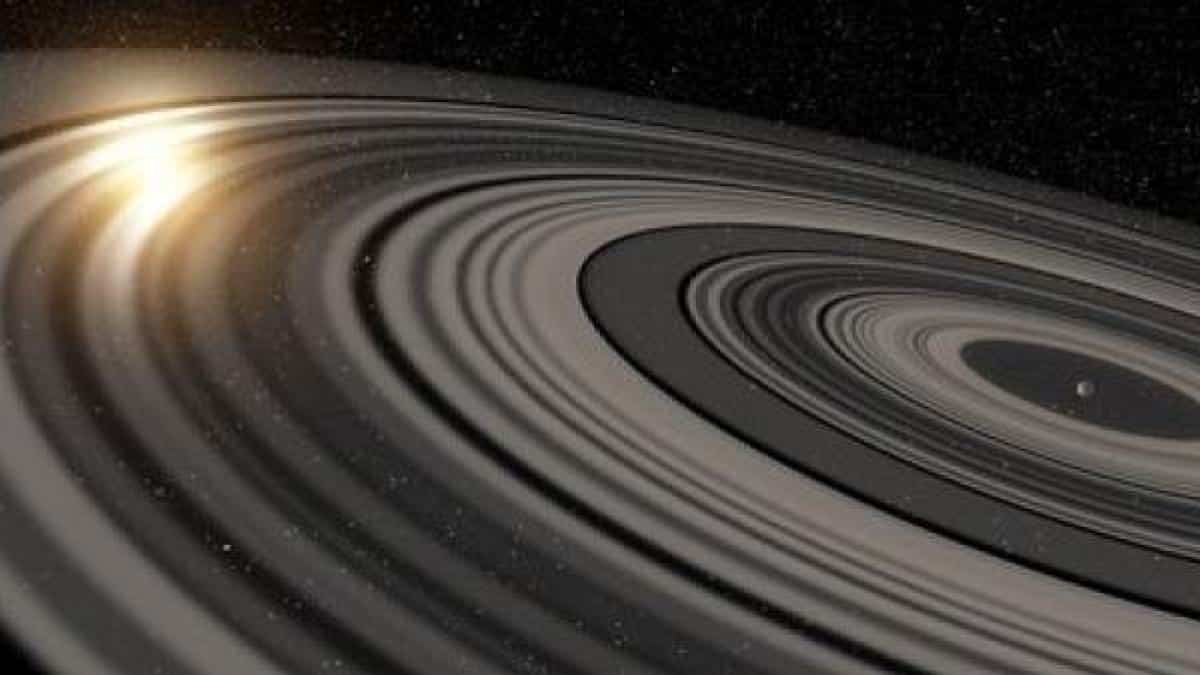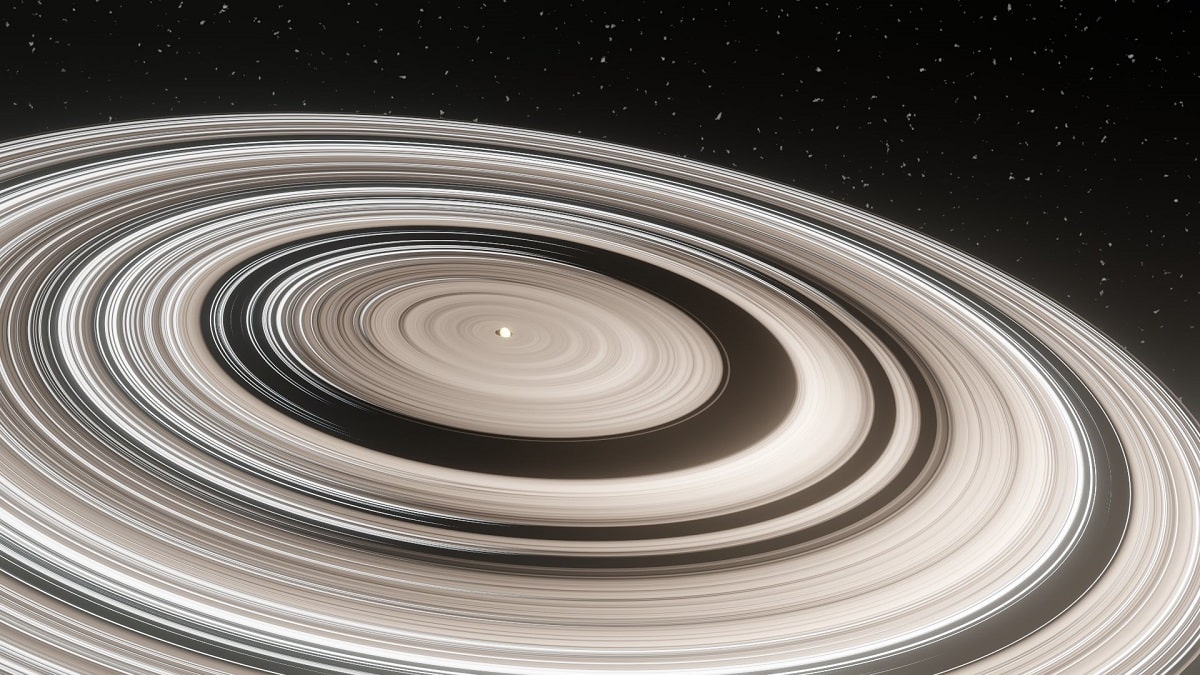
We know that the universe is practically infinite and that the human being has hardly been able to discover anything of all its extension. One of the exoplanets discovered that draws a lot of attention from scientists is the J1407b. It is a planet found in the J1407 star system, located approximately 434 light years away from Earth. This planet has created a lot of interest from astronomers and space fans due to its unique and mysterious characteristics.
Therefore, we are going to dedicate this article to tell you about the characteristics, discovery and curiosities of the planet J1407b.
Key features

What most attracts the attention of this planet to the scientific community is its extraordinarily large and complex ring system. The rings of this planet are much larger and more massive than those of Saturn. The total diameter of J1407b's rings is estimated to be around 120 million km, which is equivalent to approximately 200 times the distance between the Earth and the Moon. These rings are made up of a large number of particles, from tiny fragments to moon-sized objects.
It is a planet that presents great variability in the structure of its rings. Studies have revealed that its rings present changing characteristics over time. This suggests that there may be moons or exomoons orbiting the planet, whose gravitational interactions modify the shape of the rings. This phenomenon raises numerous questions about the formation and evolution of planetary systems, and has led to intriguing theories about the possible presence of habitable exomoons in J1407b.
Regarding the physical dimensions of the planet J1407b, It is about 20 times bigger than Jupiter, this being the largest planet in our solar system. Its exact mass has not yet been precisely determined, but it is estimated to be several times that of Jupiter. Furthermore, J1407b's orbit around its star is extremely eccentric, meaning that its distance from its star varies significantly over its orbital period. All this could influence its climate and atmospheric conditions.
Discovery of the planet J1407b

In 2012, University of Rochester astronomer Eric Mamajek and his team were the first to report the discovery of the J1407 system and its peculiar eclipses. From the ring system that surrounds J1407b, a substellar companion, it was deduced from the observation of a prolonged and complicated eclipse of the star J1407 during a period of 56 days in April and May 2007.
J1407b was labeled a "Super Saturn" or "Saturn on steroids" due to its extensive circumplanetary ring system. The ringed body has an estimated mass similar to that of Earth, and it can be confirmed with more than 99% certainty that it is not a star with a mass greater than 80 Jupiter masses.
In 2007, a sequence of occultations of the star 1SWASP J140747.93-394542.6 was observed for 56 days, which led to the discovery of J1407b, the first exoplanet with a ring system. The system's multi-ring pattern was consistent with a large planetary system and had an outer radius that is 640 times that of Saturn's rings. The research team also identified gaps in the rings, suggesting the presence of exomoons, or satellites, that formed and accumulated from J1407b's orbiting material. However, given the young age of the stellar system (only 16 million years) and the massive size of the ring system (Earth mass equivalent), experts believe it is more likely to be a circumplanetary disk or protoexosatellite in the process. satellite formation rather than a stable ring system in a mature planetary system like the rings of Saturn.
Knowledge about the rings of the planet J1407b

As published by the Leiden Observatory and the University of Rochester discovery leaders, this planet has 37 rings. This number of rings is much more than originally thought. Each of these rings has a diameter of hundreds of 10,000 kilometers, formed by very dark matter that blocks almost all the light from the star. This feature was key to its discovery.
There is a large hole in that mass of rings, which may indicate the presence of the moon. And that structure is actually an accretion disk on a world in the process of formation. In fact, It can't even be a planet and drift into a brown dwarf., where the material that now looks like a ring ends up partially or completely disappearing.
For now, the researchers are encouraging amateur astronomers to keep an eye on the exploding east for its next eclipse, based on which they can learn more about it.
Some curiosities
In addition to the investigations about the rings, there has been speculation that J1407b harbors notable atmospheric features. Although the composition of its atmosphere has not yet been confirmed, scientists have conducted research and simulations to better understand possible weather conditions on this distant planet.
It is believed that it could have an atmosphere rich in elements such as hydrogen and helium, similar to the gas giants in our solar system. However, it has also been theorized about the presence of heavier elements, such as methane and ammonia, which they could confer unique colors and patterns to your atmosphere. These atmospheric components could interact with sunlight in surprising ways and contribute to the brightness variations observed in J1407b.
One of the most striking curiosities of this planet is its possible ability to host moons or exomoons in orbit around it. Gravitational interactions between the planet and these hypothetical moons could have a significant impact on the structure of the rings, as well as on the climatic conditions of the planet itself. If habitable exomoons existed on J1407b, they could offer a potentially suitable environment for life, further increasing interest in learning more about the planet.
I hope with this information you can know more about J1407b and its features.